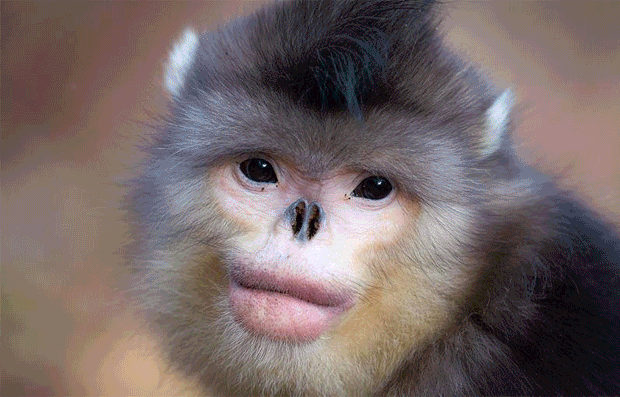GNN Ads
Yeti Crab
Also known as the Kiwaidae, this crab is a type of marine decapod living at deep-sea hydrothermal vents and cold seeps. The animals are commonly referred to as "yeti crabs" because of their claws and legs, which are white and appear to be furry like the mythical yeti.
The markhor
The markhor is a large species of wild goat that is found in northeastern Afghanistan and Pakistan. The species is classed by the IUCN as Endangered, as there are fewer than 2,500 mature individuals.
The markhor is the national animal of Pakistan. While chewing the cud, a foam-like substance comes out of its mouth which drops on the ground and dries. This foam-like substance is sought after by the local people, who believe it is useful in extracting snake poison from snake bitten wounds.
Zebra Duiker
The zebra duiker is a small antelope found in Ivory Coast and other parts of Africa. They have gold or red brown coats with distinctive zebra-like stripes hence the name Their prong like horns are about 4.5 cm long in males, and half that in females. They live in lowland rainforests and mostly eat leaves and fruit.
Snub Nosed Monkey
Snub nosed monkeys live in various parts of Asia and get their name from the short stump of a nose on their round face. Snub-nosed monkeys inhabit mountain forests, in the winter moving into deeply secluded regions.
They spend the majority of their life in the trees and live together in very large groups of up to 600 members. They have a large vocal repertoire, calling sometimes solo while at other times together in choir like fashion.
Southern Red Muntjac
Found in south Asia, it has soft, short, brownish or greyish hair and is omnivorous, feeding on grass, fruits, shoots, seeds, birds' eggs as well as small animals. It sometimes even displays scavenging behavior, feeding on carrion. It gives calls similar to barking, usually upon sensing a predator.
Males are extremely territorial and despite their diminutive size can be quite fierce. They will fight each other for territory using their antlers or their tusk-like upper canine teeth, and can even defend themselves against certain predators such as dogs.
Naked Mole Rat
This creature has a lot of characteristics that make it very important to human beings. For one it is resistant to cancer. They also live up to 28 years, which is unheard of in mammals of its size. It seemingly does not age much in those 28 years either. It remains “young, healthy and fully fertile for almost all its days, which for an elderly animal is equivalent to an 80 year old woman having the biological make up of someone 50 years younger.” The naked mole rat is used in both cancer research and the study of aging. Not only making it a bizarre creature, but an incredibly important creature as well.
The Patagonian Mara
The Patagonian Mara is a relatively large rodent found in parts of Argentina. This herbivorous, somewhat rabbit like animal has distinctive long ears and long limbs and its hind limbs are longer and more muscular than its forelimbs.
The Maned Wolf
The Maned Wolf is the largest canid in South America, resembling a large fox with reddish fur. This mammal is found in open and semi-open habitats, especially grasslands with scattered bushes and trees throughout South America. The maned wolf is the tallest of the wild canids and it's long legs are most likely an adaptation to the tall grasslands of its native habitat.
The Amazonian Royal Flycatcher
The Amazonian Royal Flycatcher is found in forests and woodlands throughout most of the Amazon basin. They are about 6 1/2 inches in length and like to dart out from branches to catch flying insects or pluck them from leaves. They build very large nests sometimes up to 6 feet long on a branches near water. The nest hangs over the water which makes it hard for predators to reach.
Lamprey
Lampreys are a type of jawless fish that live mostly in coastal and fresh waters whose adults are characterized by a toothed, funnel like sucking mouth. They attach themselves to fish and suck their blood. Lampreys have been around for nearly 300 millions years and their body structure has remained relatively unchanged.



















